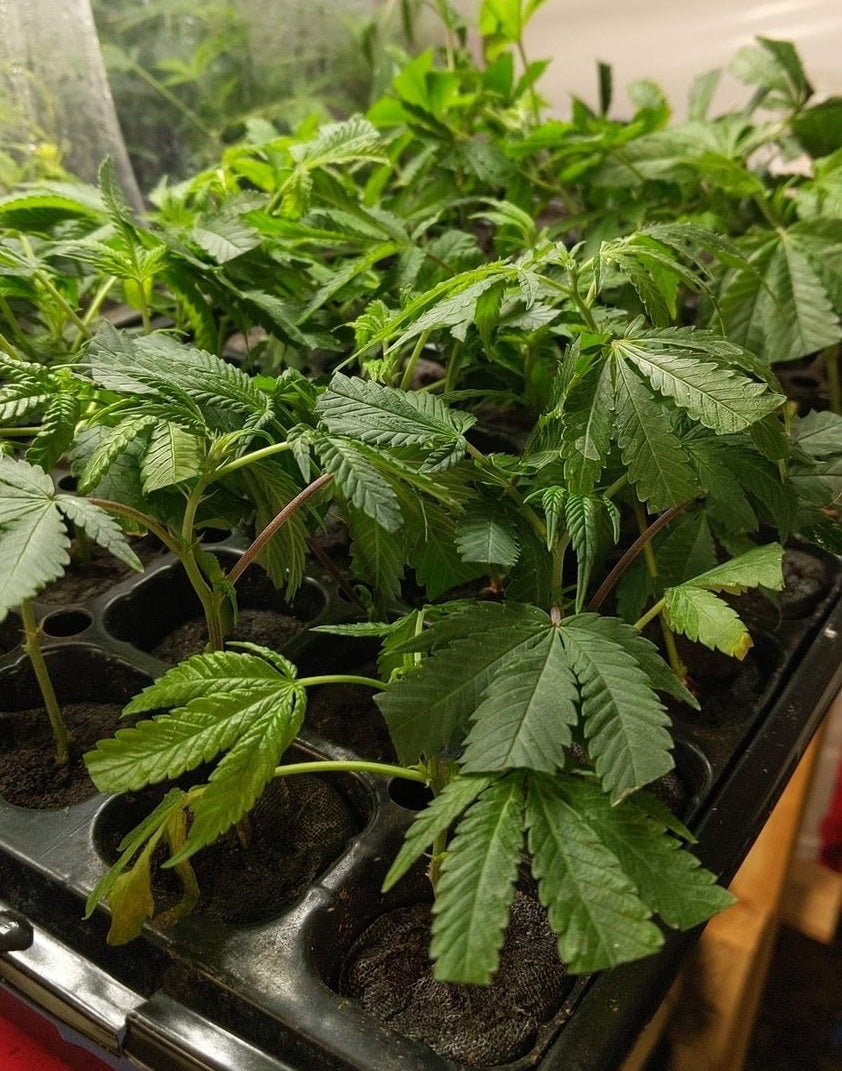Cannabis cultivation has witnessed remarkable advancements in recent years, leading to more efficient and streamlined processes. From the moment a clone is taken to the final harvest, the journey of cannabis has become increasingly effortless for growers. In this blog, we will explore the various stages of cannabis cultivation, highlighting the advancements and techniques that make the journey from clone to harvest a seamless and rewarding experience.
The Power of Cloning:
- The Cloning Process: The journey of cannabis begins with cloning, where a small cutting, known as a clone, is taken from a mature plant. This process ensures genetic consistency and allows growers to replicate the desirable traits of their chosen plant. Cloning eliminates the need to germinate seeds, saving time and effort.
- Benefits of Cloning: Cloning offers numerous benefits, such as cost savings and accelerated growth. By eliminating the need to purchase seeds, growers can save money. Additionally, clones already have an established root system, which promotes faster growth and reduces the time to reach maturity. Cloning also allows growers to preserve exceptional genetics and maintain a perpetual harvest cycle.
Vegetative Stage: Nurturing Healthy Plants
- Optimal Growing Conditions: During the vegetative stage, cannabis plants require specific environmental conditions to thrive. This includes providing the right amount of light, temperature, humidity, and nutrient levels. Advancements in indoor grow systems, such as LED lighting and automated climate control, have made it easier for growers to create the ideal conditions for their plants.
- Training Techniques: To maximize yields and create a uniform canopy, growers employ various training techniques, such as topping, pruning, and low-stress training (LST). These techniques help control the plant’s shape, encourage lateral growth, and promote better light penetration. Implementing these techniques during the vegetative stage sets the foundation for robust and productive plants.
Flowering Stage: The Journey Towards Bountiful Buds
- Photoperiod Control: Cannabis plants transition from the vegetative stage to the flowering stage when the light cycle is adjusted to 12 hours of light and 12 hours of uninterrupted darkness. Automating lighting schedules through timers or using light deprivation techniques simplifies this process, allowing growers to effortlessly trigger the flowering stage.
- Nutrient Management: Proper nutrient management is crucial during the flowering stage to support healthy bud development. Advanced nutrient systems tailored for specific stages of growth make it easier for growers to provide the necessary nutrients without the guesswork. By following feeding schedules and monitoring plant health, growers can ensure optimal nutrient uptake and avoid deficiencies or excesses.
- Environmental Considerations: Maintaining appropriate temperature, humidity, and airflow levels is essential during the flowering stage to prevent mold, mildew, and pests. Modern ventilation systems, humidity controllers, and air purification technologies simplify environmental control, providing growers with peace of mind and effortless management of their flowering plants.
Harvest: The Fruits of Labor
- Harvest Timing: Determining the ideal harvest time is critical for obtaining the desired potency, flavor, and effects of the cannabis buds. Monitoring trichome development using magnification tools, such as jeweler’s loupes or digital microscopes, allows growers to accurately assess the ripeness of their plants and choose the optimal harvest window.
- Trimming and Drying: After harvest, the buds go through a trimming process to remove excess leaves and improve aesthetics. Advances in trimming machines and hand-held trimmers make this process faster and more efficient. Following trimming, proper drying and curing techniques ensure the preservation of aroma, potency, and overall bud quality. Automated drying systems with controlled humidity and temperature settings simplify this stage and reduce the risk of mold or mildew.
Post-Harvest Considerations: Preservation and Enjoyment
- Storage Solutions: Once dried and cured, cannabis buds need to be stored properly to maintain their quality over time. Innovations in storage solutions, such as airtight containers with humidity control packs, ensure optimal moisture levels and prevent degradation of cannabinoids and terpenes. These containers also provide protection against light and air, preserving the potency and flavor of the harvested buds.
- Consumption Methods: Cannabis cultivation goes hand in hand with various consumption methods. Today, there is a wide range of options available to enjoy cannabis, including smoking, vaporizing, edibles, tinctures, and topical. The effortless journey of cannabis extends beyond cultivation, as advancements in extraction techniques and product formulation provide consumers with a diverse and convenient array of consumption choices.
Conclusion:
The journey of cannabis from clone to harvest has become increasingly effortless due to advancements in cultivation techniques, equipment, and technology. Cloning allows for genetic consistency and accelerated growth, while improvements in indoor grow systems and training techniques enhance plant health and productivity. Automated lighting schedules, advanced nutrient systems, and environmental control technologies simplify the flowering stage. Harvesting, trimming, and drying have also become more efficient with the help of modern tools and equipment. Finally, storage solutions and a variety of consumption methods ensure that the fruits of labor can be preserved and enjoyed at their best.
As cannabis cultivation continues to evolve, the journey from clone to harvest will likely become even more effortless. Growers and enthusiasts can look forward to ongoing innovations that simplify the cultivation process, enhance quality, and offer a wide range of consumption options. Whether it’s for personal use, medicinal purposes, or the emerging legal cannabis market, the effortless journey of cannabis opens up a world of possibilities for cultivators and consumers alike.
If you’re curious about the history of Cannabis Prohibition, we’ve got you covered in our engaging article about A History Of Cannabis Prohibition In Canada.
For a comprehensive understanding of Cannabis Clones, we recommend exploring our posts on Terpenes: The Hidden Gems in Cannabis Strains, Unveiling The Calming Power of Limonene in Cannabis, and Easy Cannabis Strains for New Growers.













